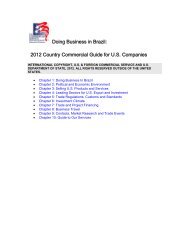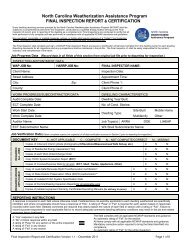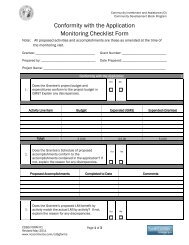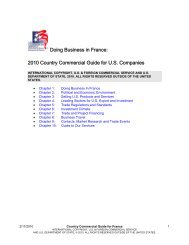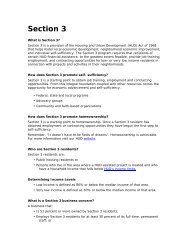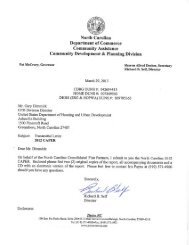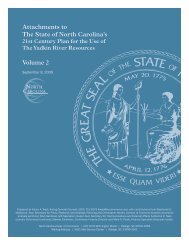Doing Business In (Insert Country Name Here) - Department of ...
Doing Business In (Insert Country Name Here) - Department of ...
Doing Business In (Insert Country Name Here) - Department of ...
Create successful ePaper yourself
Turn your PDF publications into a flip-book with our unique Google optimized e-Paper software.
The United States’ major agricultural exports to Mexico from January to October 2009were ($US Billion): red meat ($1.3), coarse grains ($1.5), soybeans and meal ($1.5),poultry meat ($0.47), dairy products ($0.53), fresh fruits and vegetables ($0.39), wheat($0.4), cotton ($0.3)m, and feeds and fodder ($.3).The following tables summarize the market situation <strong>of</strong> commonly exported U.S.agricultural products:1.- Dairy Products (1000 Metric Tons)2007 2008 2009Total Market Size 1/ 11,854 12,039 12,285Total Local Production 11,480 11,686 11,940Total Exports 8 17 15Total Imports 374 353 345Imports from the U.S. 2/ 316 327 3001/ PSD Post Statistics, Foreign Agricultural Service2/ World Trade AtlasNon-fat dry milk (NFDM) exports from the U.S. to Mexico increased a moderate 4percent in 2009. The large increase <strong>of</strong> U.S. exports to Mexico witnessed in 2008 was adirect result <strong>of</strong> NAFTA being fully implemented. Many factors continue to weigh on theMexican dairy sector such as the financial crisis and the presence <strong>of</strong> noncompetitivedairy producers. Given the current poor economic situation and the politicalenvironment, LICONSA, a state-run dairy enterprise, will continue to increase purchases<strong>of</strong> domestically produced milk and reduce its imports <strong>of</strong> non-fat dry milk (NFDM).However, since dairy products are basic ingredients in the Mexican diet, Mexico’s fluidmilk production is expected to continue to grow, leading to increased production <strong>of</strong>cheese, butter, powdered milk, and other dairy products.2.- Red Meat (1000 Metric Tons)1/ PSD Post Statistics, Foreign Agricultural Service2007 2008 2009Total Market Size 1/ 3,641 3,704 3,677Total Local Production 2,787 2,761 2,777Total Exports 122 133 131Total Imports 854 943 900Imports from the U.S. 2/ 525 605 6312/ World Trade AtlasDue to the international economic crisis, weak demand, a volatile exchange rate andlower gross family incomes, the rate <strong>of</strong> growth for red meat consumption in Mexico isexpected to decline. Many middle and lower income consumers are expected to switchaway from red meats to cheaper protein sources. U.S. beef exports to Mexico weredown 83 percent in 2009. Live calf and red meat exports are forecast to increase in themedium term. 2009 was a difficult year for pork in Mexico due to the H1N1 outbreak.Early on during the outbreak, the Mexican press consistently used the term “swine flu,”which increased fears and resulted in lower consumption and domestic production.However, lower prices, an effective media consumption campaign, and increased




